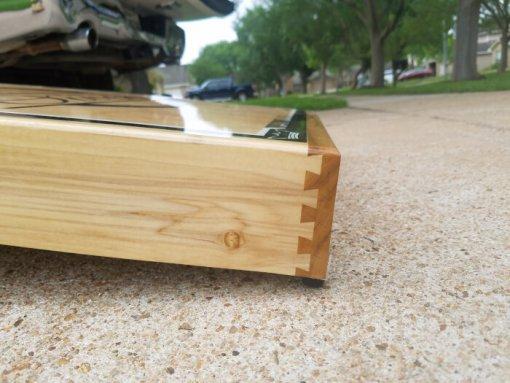PVC vs Pine Wood Cornhole Boards: A Comparative Analysis

 Cornhole, an incredibly popular backyard and tailgate game, invites a critical decision for enthusiasts and newbies alike: What material should you choose for your boards? Among the numerous options available, two stand out— all-weather PVC and traditional white spruce ( or pine wood* ). Both have their merits and drawbacks.
Cornhole, an incredibly popular backyard and tailgate game, invites a critical decision for enthusiasts and newbies alike: What material should you choose for your boards? Among the numerous options available, two stand out— all-weather PVC and traditional white spruce ( or pine wood* ). Both have their merits and drawbacks.
**All-Weather PVC Cornhole Boards**
*Benefits*
The primary advantage of all-weather PVC cornhole boards is their durability. Designed to withstand the elements, these boards offer longevity that their wooden counterparts struggle to match. They're perfect for outdoor enthusiasts who frequently enjoy the game, regardless of weather conditions.
PVC boards also demand less maintenance than wooden ones. Unlike wood, they don't warp or rot over time, and their slick surface ensures consistent gameplay. These boards are also lighter, making them more portable and perfect for traveling.
*Negatives*
Despite their advantages, PVC boards do have some drawbacks. One is their higher price point due to the durable materials used. While it may be a worthy investment for frequent players, casual users might find the cost unappealing.
Also, some players argue that PVC boards don't provide the traditional cornhole experience. The bounce and slide characteristics are different from wooden boards, and the sounds made when the bag hits the board are significantly different, which may deter purists.
**Wood Cornhole Boards**
*Benefits*
For many, wood (pine or white spruce) cornhole boards are the epitome of tradition. They provide a classic feel that many cornhole enthusiasts cherish. Pine and spruce isare lighter than many other woods, so these boards still offer some level of portability.
Wooden boards also provide a unique gameplay experience. They offer more friction, affecting the strategy involved in throwing the bags. The distinct 'thud' sound when a bag lands on a wooden board brings a nostalgic charm for many.
An additional benefit is cost-effectiveness. Wooden boards are generally less expensive than their PVC counterparts, making them a great option for those on a budget or just getting started with the game.
*Negatives*
The major downside to wooden boards is their vulnerability to weather. Exposure to the elements can lead to warping and damage over time, affecting the board's performance. They require more maintenance, including regular sealing to protect the wood.
Additionally, wooden boards are heavier than PVC, posing a challenge for those needing to transport their set frequently. Finally, inconsistencies in the wood can alter the surface over time, impacting the playability and necessitating potential repairs.
**Conclusion**
Both PVC andwood cornhole boards come with their unique pros and cons. Your choice will depend on your personal preferences, intended use, and budget. If durability and weather resistance are your top priorities, PVC boards are an excellent choice. If you value tradition, the unique gameplay feel, and affordability, then wooden boards might be your best bet. The beauty of cornhole is that there's a perfect board for everyone's unique needs.